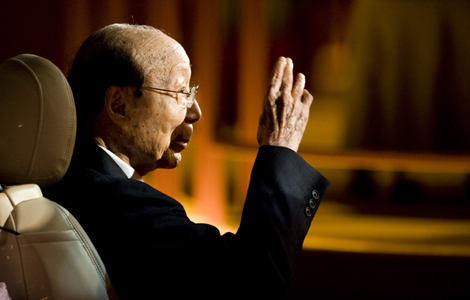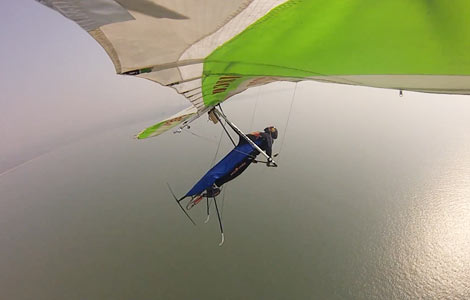Ready for take-off?
Updated: 2014-01-13 02:19
By TODD BALAZOVIC and WANG WEN (China Daily)
|
|||||||||||
|
 |
|
A British Airways staff member helps "pandas" to get ready for the new flight route between London and Chengdu, photographed at London’s Heathrow Airport in June. International carriers introduced more than a dozen new routes to China's second- and third-tier cities in the past two years. Provided to China Daily |
Chinese airports, despite being among the busiest in Asia, failed to take any of the top 10 spots in the 2013 On-time Airline and Airport Performance report, published by Flightstats, a travel tool that provides real-time flight information.
"What is disturbing are the delays on the ground, just before take off," says Peter Jorna, president of the European Association for Aviation Psychology. "I know this for Shanghai where we often have to wait three hours in the aircraft, before starting a flight of 12 to 13 hours.
"Such long hours are not OK for both crew and passengers."
Aiming to divert traffic away from such high-volume areas to alleviate pressure and avoid delay, China has seen several new airports built in second- and third-tier cities in the past decade.
Most recently, the southern city of Shenzhen completed work on an 8.5 billion yuan international terminal in November. Tripling the size of the airport's other terminals, it saw a staggering 2 million passengers pass through its gates within the first month of operation.
Chengdu, which has seen the most new activity from international airlines, plans to build a new airport by 2017 that will double the current capacity of the present one.
Beijing will also see an additional $11.8 billion airport with seven runways built in the southern part of the city, due to be completed by 2018.
"China is investing in ground infrastructure," says Zhang Baojian, regional vice-president of International Air Travel Association North Asia. "By 2015, China is expected to have more than 230 airports. This will ensure that there is sufficient capacity to accommodate the anticipated aviation growth.
"However, investing only in infrastructure on the ground will not be enough. By 2020, the anticipated traffic volume is expected to result in flight delays at Chinese airports if the airspace structure remains unchanged from today. This means flights will not be able to depart or arrive on time."
The sheer speed of growth means that even as new airports are built, they are serving only to keep up with the current amount of passengers, Herdman of the Association of Asia-Pacific Airlines says.
"You can build airplanes and fly them but if the airspace management and airport capacity cannot keep pace, then you are going to get problems, and that's felt by the traveling public in terms of delays and congestion," he says.
"But even where there is an enthusiasm for building modern infrastructure, you can point to a number of cases where it hasn't kept pace with demand.
"We're talking about China, but there's a similar case in the Philippines and Indonesia, where the rapid growth in demand for air travel, particularly domestic, has outstripped the runway and terminal capacity."
Compounding congestion is China's unique management of airspace. As is the case with the development of most commercial aviation zones worldwide, Chinese airspace began under military control. But unlike in other parts of the world, where airspace control was gradually ceded as the aviation industry grew, in China more than 80 percent of airspace still remains under the control of the military.
This places a limit on the amount of flights allowed to a certain location, even if the infrastructure is capable of supporting more. Limited airspace has led to strong competition among domestic and international airlines vying for slots at the major hubs. With a majority of the new passengers in China traveling domestically, when slots do become available at major hubs, they are often awarded to local carriers.
The tough competition with domestic carriers at the major city hubs has further prompted international carriers to look to routes where terminal spaces are more easily accessed and new markets can be created.
For US carriers, it's not just airspace limiting the flow of flights between the US and China, says Robert Mann, CEO of R.W. Mann and Co Inc, a US-based aviation analysis and consulting firm.
He says the lack of bilateral agreements between China and the US have created a hesitation from US carriers about investing too much into expanding their China business.
"The primary issue for US airlines is a lack of open-skies agreements," Mann says.
Aimed at removing government involvement in commercial air operations, the US has established open-skies agreements with more than 110 countries. That there are none with China is a hurdle for US airlines eyeing expansion.
Unhindered by bilateral agreements, European airlines are showing more enthusiasm for expanding their presence in China, with the majority of new routes to second-tier cities initiated by EU carriers.
US airlines have been pushed to use the more traditional means of access — encouraging partnerships with Chinese airlines. Since 2011, Delta has been using its local partnerships to begin offering direct flights from Beijing to the US. Previously, flights from Beijing stopped at Tokyo's Narita International Airport before traveling on.
Contact the writers at toddbalazovic@chinadaily.com.cn and wangwen@chinadaily.com.cn
Related Stories
Weihai launches the first direct flight to Taiwan 2014-01-08 16:52
Flights of fancy 2014-01-12 01:35
Beijing-to-Bali direct flights scheduled 2013-12-30 11:02
Tigerair launches direct flights to Ningbo 2013-12-26 17:14
Direct flight launched between Doha, Hangzhou 2013-12-20 18:07
Today's Top News
Unexpected sharp fall in tourism hits Beijing
Japan tries to justify Abe's shrine visit
Ground control to Major Tang
Int'l air carriers seeks China share
Apology letter showed goodwill toward China
Iran nuclear deal to take effect
Sharon's death triggers mixed reactions
Former Israeli PM Ariel Sharon dead at 85
Hot Topics
Lunar probe , China growth forecasts, Emission rules get tougher, China seen through 'colored lens', International board,
Editor's Picks

|

|

|

|

|

|





